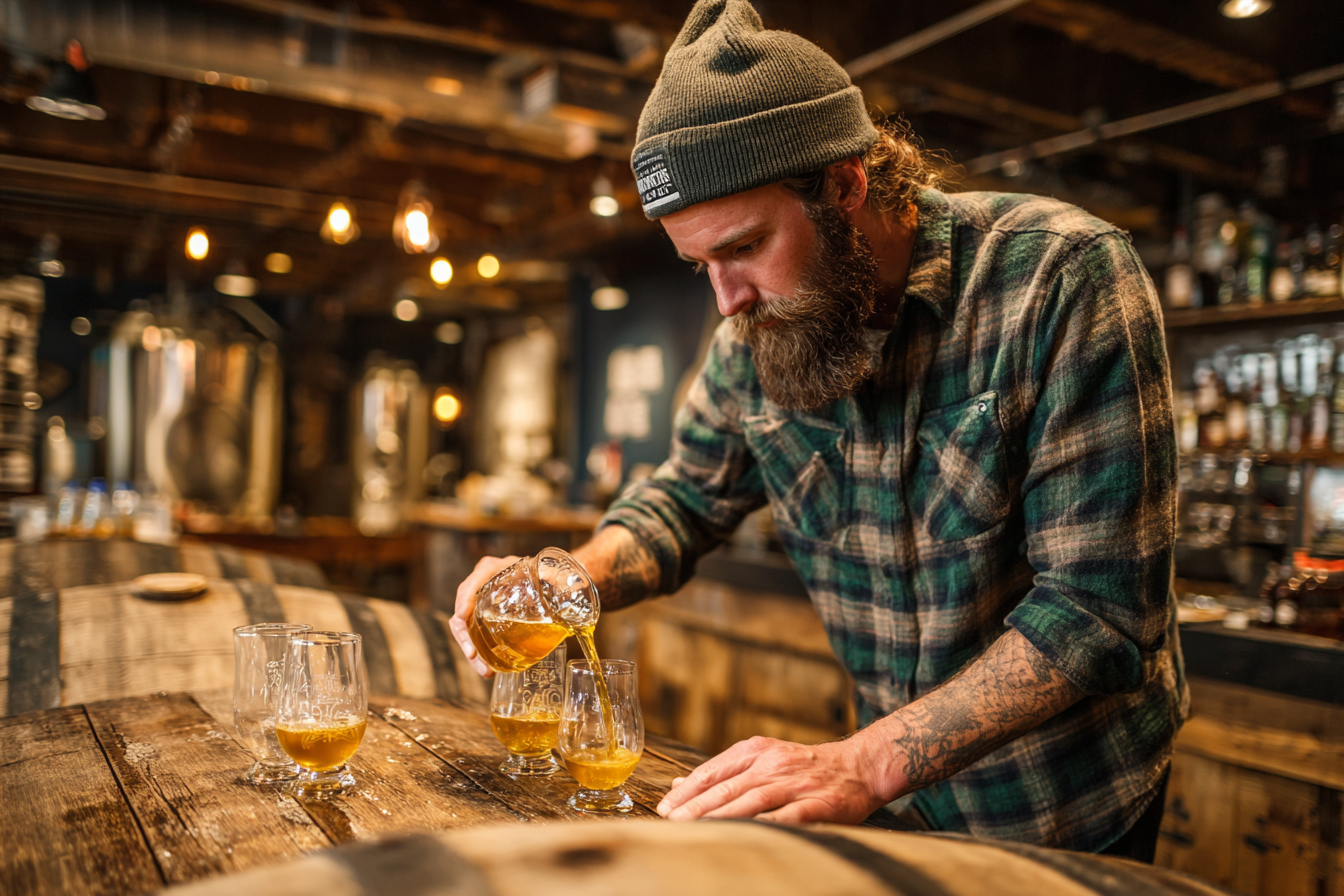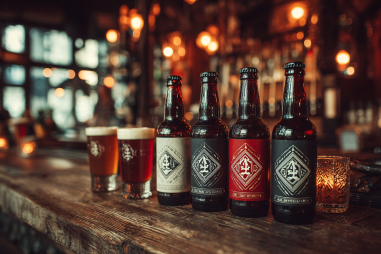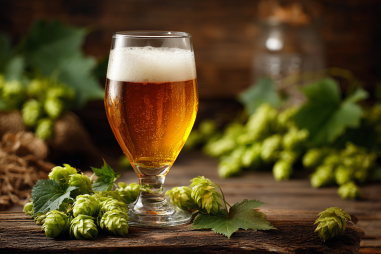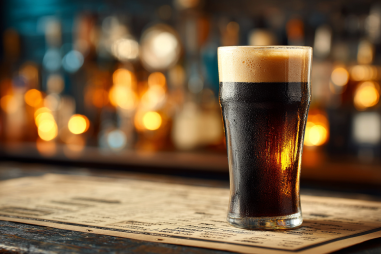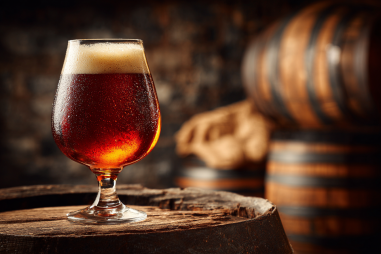Barrel-aged barleywine represents one of the most complex and rewarding beer styles crafted by passionate brewers. With its intense malt character, high alcohol content, and layered flavors derived from extended aging in barrels, this brew offers a drinking experience rich in depth and sophistication. If you’ve ever wondered how brewers transform a potent barleywine into a barrel-aged masterpiece, you’re in the right place. This guide walks you through the entire process—from the initial recipe decisions to the patient wait of barrel aging—sharing essential tips to help you master the art of creating barrel-aged barleywine.
Overview of Barleywine as a Beer Style
Barleywine is a robust and full-bodied ale known for its high alcohol content—typically ranging from 8% to over 12% ABV—and intense malt sweetness balanced by pronounced hop bitterness. Originating in England and evolving through American craft beer innovation, barleywines are characterized by deep caramel, toffee, and dark fruit flavors. They usually showcase a rich mouthfeel and a warming finish, making them perfect candidates for aging.
The extended aging process, especially in wooden barrels, enhances the flavor complexity and smooths out the alcohol’s heat. Barrel-aged barleywines develop unique notes from both the wood and any residual spirits previously held in the barrels, such as whiskey or bourbon. This combination transforms the beer into an exceptional treat, prized by beer aficionados and brewers alike.
Ingredients Specific to Barleywine Brewing
Crafting barleywine starts with carefully chosen ingredients tailored to support the style’s big flavors and high alcohol content. Key components include:
- Malt: A blend of pale malt with specialty malts like caramel, crystal, or Munich malt provides the rich sweetness and complex malt backbone. Some brewers incorporate roasted or chocolate malts very sparingly to add depth without overpowering the style.
- Hops: American barleywines tend to use assertive hop varieties such as Cascade, Centennial, or Chinook to balance malt sweetness with bitterness and impart citrus or piney aromas. English barleywines usually feature more restrained hop profiles.
- Yeast: A clean, alcohol-tolerant ale yeast strain is essential to ferment the high gravity wort effectively while producing a clean profile. English ale yeasts or specialized strong ale strains are common choices.
- Water: Adequate mineral content supports malt extraction and balance, but brewers often tailor water chemistry to their specific malt and hop selection.
These ingredients create the robust foundation needed for a barleywine that can handle extended barrel aging without losing its defining character.
Brewing Steps Prior to Barrel Aging
Before a barleywine hits the barrel, the brewing process must be managed carefully to produce a balanced and fermentable wort that will age gracefully.
- Mashing: Extended mashing schedules, often with step-mash techniques, help break down complex starches in the dense malt bill, promoting fermentability while preserving body.
- Boiling: The wort boil is typically long—90 to 120 minutes—to concentrate sugars and develop caramelization and Maillard reactions that deepen flavor.
- Hop Additions: Hops are added in multiple stages, including early for bitterness, late for aroma, and sometimes dry hopping to enhance complexity.
- Fermentation: Pitching a healthy yeast starter and maintaining stable temperatures allow full attenuation without creating off-flavors. Barleywines often undergo extended fermentation times due to their high gravity.
- Conditioning: After primary fermentation, the beer may condition in stainless steel tanks or other vessels to allow flavors to meld and settle before transfer to barrels.
This thorough preparation ensures that the barleywine is ready to evolve during barrel aging rather than being overwhelmed by harsh alcohol notes or other imbalances.
Choosing the Right Barrels for Aging
Barrel selection is a pivotal decision in the barrel-aged barleywine brewing process. The choice of barrel influences the flavor profile dramatically, adding nuances from the wood and any residual spirits or previous contents.
- Wood Type: American oak barrels are common and impart vanilla, coconut, and caramel notes, while French oak tends to be subtler with more tannins.
- Previous Contents: Bourbon barrels are favored because their charred interiors and lingering spirit flavors complement barleywine’s richness. Wine barrels, especially red wine, introduce fruitiness and tannic structure, while rye barrels add spiciness.
- Barrel Size and Age: Smaller barrels accelerate aging due to increased surface area contact, while older barrels impart milder wood notes but more influence from previous fills.
Brewers often experiment with blends of barrels to find the ideal balance of wood character and spirit influence that best enhances their barleywine.
Barrel Aging Conditions and Timing
Once in the barrel, the barleywine embarks on a slow transformation. Proper aging conditions and timing are crucial to developing complexity without spoilage or over-oaking.
- Temperature: Aging is best done in a cool, stable environment—around 55°F (13°C)—to prevent excessive oxidation and volatile off-flavors.
- Humidity: Proper humidity levels help maintain barrel integrity and minimize evaporation losses (“angel’s share”).
- Timeframe: Most barrel-aged barleywines require a minimum of 6 to 12 months in the barrel, while some are aged even longer for richer profiles. Regular sensory evaluation guides the ideal timeframe.
During this period, oxygen gently interacts with the beer, mellowing harsh notes and enhancing complex flavor compounds derived from both the malt and barrel.
Monitoring Development During Aging
Patience is key, but so is vigilance. Regular monitoring of the barrel-aged barleywine ensures that the flavors develop as intended and any potential issues are caught early.
- Tasting: Frequent tastings help track the beer’s evolution and determine the optimal bottling moment.
- Sampling: Drawing samples through the bunghole or via sampling ports avoids unnecessary exposure.
- Microbial Stability: Barleywine’s high alcohol and hop content inhibit many spoilage microbes, but barrel aging still runs a risk for unwanted organisms. Sanitizing barrel exteriors and monitoring for off-aromas is essential.
- Barrel Maintenance: Ensuring barrels remain sealed and free from leaks maintains consistent aging conditions.
This meticulous oversight ultimately results in a polished, balanced barrel-aged barleywine.
Packaging and Bottling Considerations
After aging, the final step is packaging. Proper handling preserves the beer’s hard-won qualities and prepares it for release or cellaring.
- Filtration: Light filtration may be employed to remove sediment, but many brewers choose minimal filtration to retain complexity.
- Carbonation: Barrel-aged barleywines are typically bottled with moderate carbonation—too much fizz can disrupt the thick mouthfeel.
- Bottle Conditioning vs. Forced Carbonation: Bottle conditioning with yeast can add subtle complexity, though forced carbonation offers more control and quicker turnaround.
- Packaging Type: Dark glass bottles minimize light exposure, and cork-and-cage closures or wax seals add to the presentation and aging potential.
Proper packaging ensures that the beer continues to age gracefully once bottles are in consumers’ hands.
Common Challenges and Tips for Brewers
Barrel-aged barleywine brewing brings unique challenges but offers great rewards with careful attention. Here are some common hurdles and tips to overcome them:
- High Gravity Fermentation: Manage yeast health with nutrient additions and proper oxygenation during pitching to avoid stuck fermentations.
- Oxidation Risk: Minimize oxygen exposure during transfers and bottling to prevent stale off-flavors.
- Barrel Contamination: Thoroughly clean and sanitize barrels prior to use, and monitor regularly for unwanted microbial growth.
- Balancing Wood Influence: Blend beer from barrels of different ages or types to achieve desired complexity without overpowering woodiness.
- Patience: Resist the urge to rush aging; flavors develop best over time.
By anticipating these challenges and adopting best practices, brewers can craft exemplary barrel-aged barleywines.
Perfecting the Craft
The art of barrel-aged barleywine brewing is a rewarding journey combining science, creativity, and patience. From selecting the right malt blend and yeast to choosing the perfect barrel and carefully aging the beer, each step influences the final product’s depth and character. Whether you are a brewer aiming to experiment with barrel aging or simply a curious enthusiast, understanding this intricate process deepens appreciation for these decadent, full-bodied brews. With dedication and care, creating a memorable barrel-aged barleywine is an achievable and satisfying pursuit that celebrates the richness of brewing tradition.

